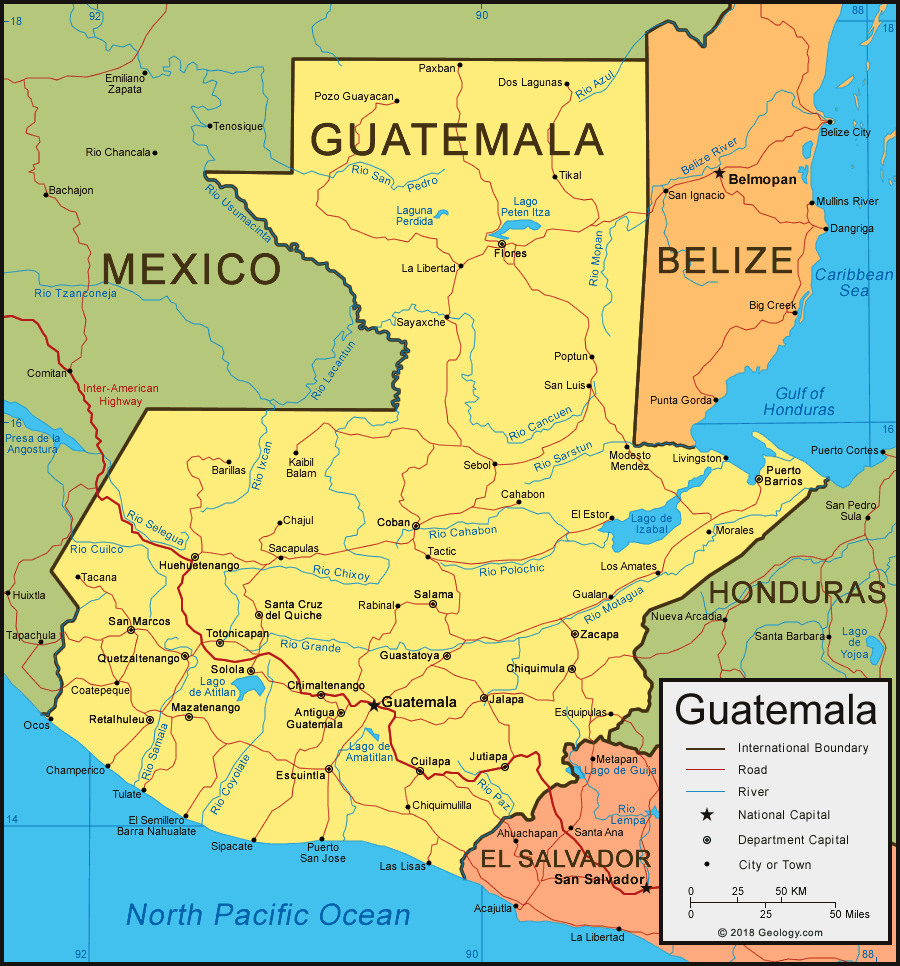
Guatemala is located at the southern border of Mexico, to the left of Belize and above the norther borders of Honduras and El Salvador.
Conquest of Guatemala
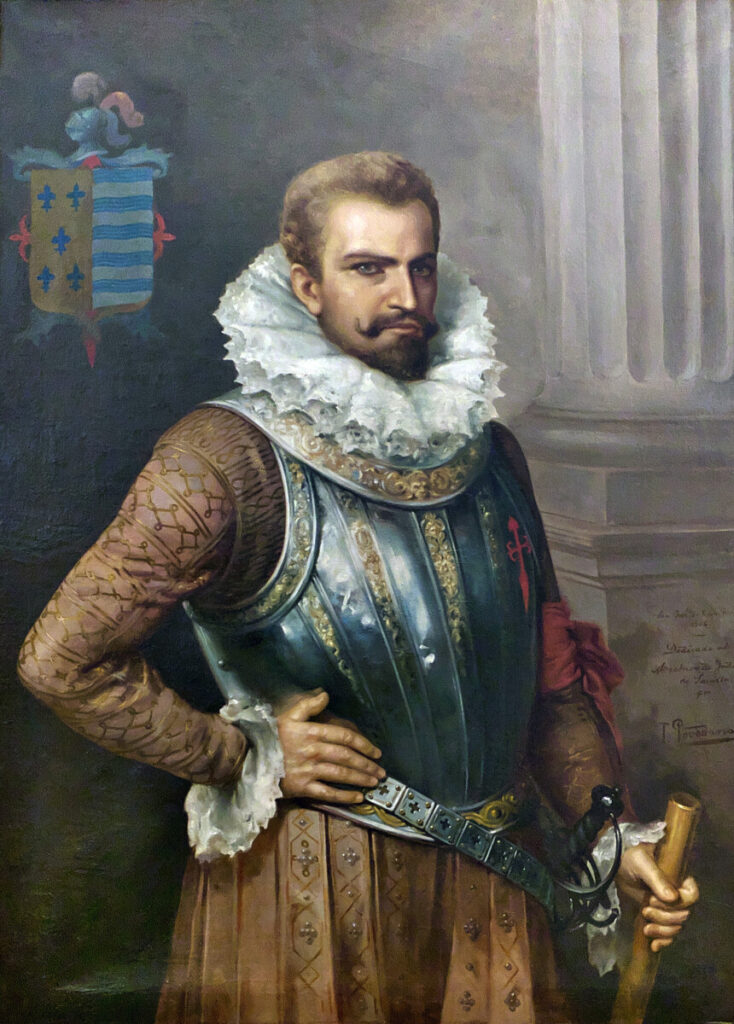
Guatemala’s conquest was a lengthy and spanned multiple decades, led by many Spanish conquistadors. Despite fierce resistance from the indigenous peoples, the Spanish steadily gained control over the region. The first ruler of Guatemala was Pedro de Alvarado, who served as the Governor-General from 1527 until his death in 1541. The conquest brought about significant changes to the region, leading to the destruction of many indigenous cultures and the imposition of Spanish language, religion, and customs. Nevertheless, the Maya culture persisted and evolved, with indigenous peoples adapting to the new colonial order and maintaining their traditions. Today, Guatemala is a country with a diverse and multicultural history shaped by its indigenous and colonial past.
Conquistador Pedro de Alvarado
(1485-1541)
Demographics
Languages
There are around 23 Mayan languages spoken in Guatemala. The largest Mayan groups are the Mam (West Guatemala), the K’iche’ (Nortwestern Guatemala), and the Kaqchikel (Central Guatemala).
Many Maya are bilingual in Spanish, however, older and more rural populations learn Spanish as a second language and they have lower literacy rates in Spanish. Bilingual education efforts have been made for Mayan languages to be utilized in schools and government, however, the widespread adoption of mayan languages still faces many challenges.
Learn more about Spanish and Maya bilingualism in Guatemala here.
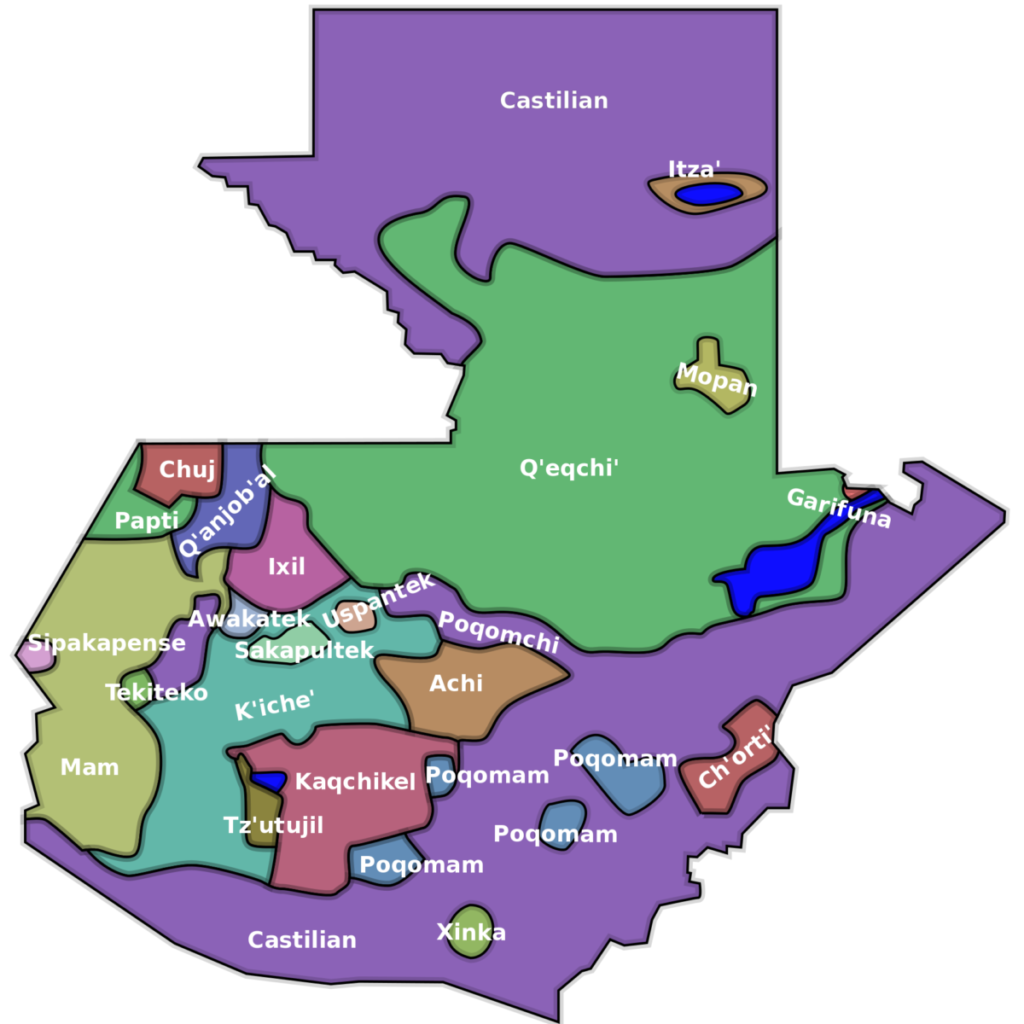
Mam
Mam has round half a million native speakers in Guatemala
JEEKA, MA CHI UULA
K’iche’
Kiche has around one million native speakers in Guatemala.
CHQETA’MAJ LE QACH’AB’AL K’ICHE’
Kaqchikel
Kaqchikel has around half a million native speakers in Guatemala.
XSAQÄR. LA ÜTZ AWACH?
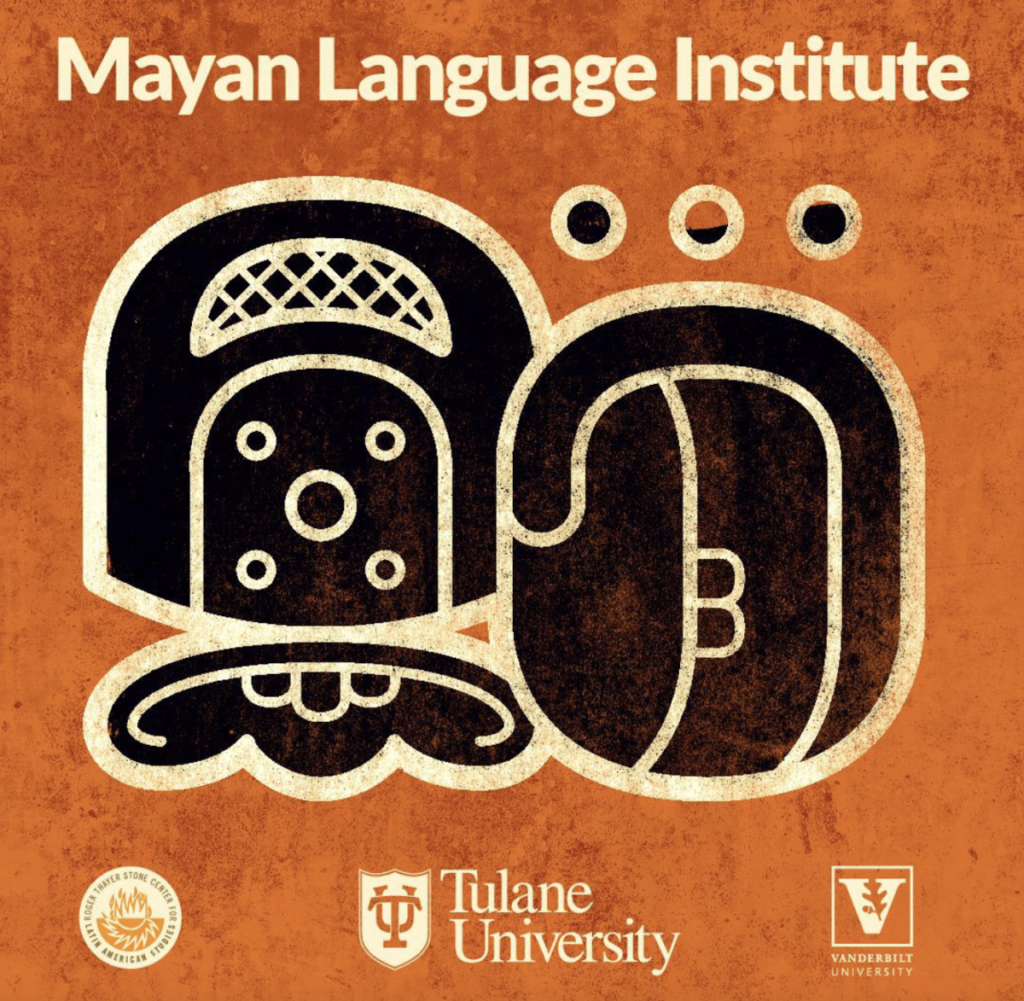
Mayan Language Institute Summer Program
“The Mayan Language Institute is a 6-week program to train students in either Kaqchikel or K’iche’ Maya, two of the most widely-spoken Mayan languages in Iximulew (Guatemala) today. Thanks to the collaboration between U.S. American faculty and Maya teachers, participants can study at the beginning, intermediate, or advanced levels of either language. The program’s highly individualized classes combine language immersion activities, lectures, one-on-one conversations, guest speakers and cultural excursions. The intensive nature of these classes, along with students’ daily immersion in Maya communities, enables them to enhance their language skills rapidly while interacting with the Indigenous peoples that sustain them.” –Stone Center for Latin American Studies
Contact the Stone Center
Phone: (504) 862 – 8629
Email: sclassum [at] tulane [dot] edu
100 Jones Hall, Tulane Uptown Campus
Ethnic groups
There are four main cultural groups within Guatemala. The Ladino and Maya population are the two largest populations in Guatemala. It is estimated that around 53% of the population are Ladinos; 44% are Mayan, 2% are Xinca and 1% are Garífuna.
The Maya
The mayan culture is the oldest of the cultures groups in Guatemala and they are native to Central America. There are 22 ethnic groups under the Mayan umbrella located throughout all of Guatemala. There are 22+ Mayan languages spoken in Guatemala alone.
The Ladino
This culture is divided in two groups, White and Mestizo. Mestizos are a result of the miscegenation of European Spaniards and the indigenous population. White Ladinos are a mix between European and Mestizo peoples. Ladinos are mostly concentrated in the center of the country mainly in the Capital City. Ladinos speak Spanish as their only language.
The Garífuna
The Garífuna or Garinagu are an extremely interesting cultural group with African and indigenous heritage. Todays population of Garífuna is very small compared to the Garífuna population in Honduras and Belize. The majority of Garífuna live in the Izabal Departmenton the east coast of Guatemala.
The Xinca
The Xinca culture belongs to three specific southern areas of the country; Jalapa, Santa Rosa and Jutiapa. It is estimated that around 1,200 Xinca remain in Guatemala today.
Religions
Although Guatemala has an immense ethnic and linguistic diversity, its religious diversity is much less varied. While Catholicism’s historically dominant position has weakened in recent decades it remains the majority religion across much of Latin America.
In Guatemala, however, the religious demographics have undergone a drastic shift since the 1970s with many Guatemalans changing from Catholicism to Protestantism.

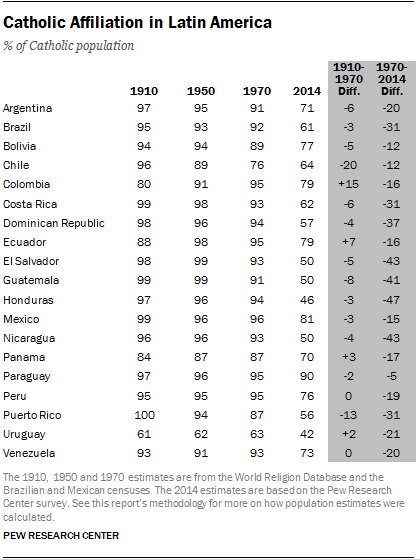
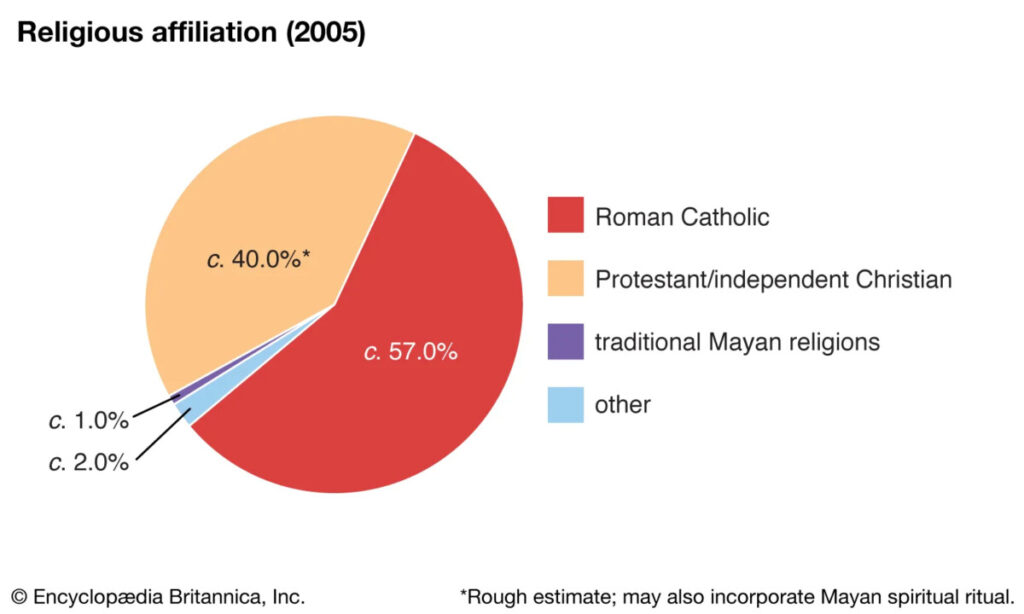
Music
The marimba has been Guatemala’s national instrument since 1978, however, its origins, while uncertain, are thought to date back centuries earlier.
It is believed that the marimba originated from African culture and made its way to Guatemala between 1535 and 1600 when the Spanish began bringing African slaves to Central America.
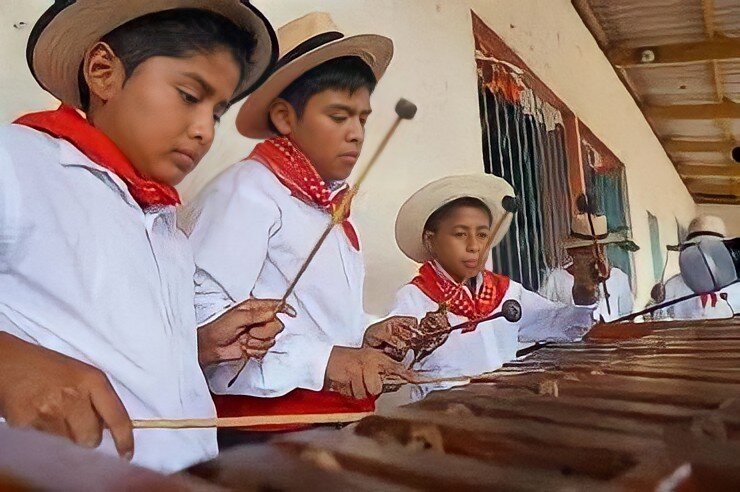
The practice of playing the marimba is something that is popular within the rural and urban communities of Guatemala. Songs played on marimbas can be upbeat and lively, as well as solemn and nostalgic. Many of the classically popular songs played on marimbas in Guatemala convey the emotion of important historical events, past loves, and the affection that one has to their nation.
One of the most popular marimba songs in Guatemala is Luna de Xelajú (Moon of Xelajú).
Live performances of Luna de Xelajú are common in Quetzaltenango (or Xela), Guatemala. (See video to the left of marimba music and traditional mayan wedding dance in Xela, Guatemala 2022)
Textiles
Mayan textiles are known across the world for their bright, vivid colors and patterns. It is believed that the textile tradition in Central America dates back to 800 B.C. Many Maya weavers today still use a traditional backstrap loom. Textiles are made from many different fibers, dyes, and materials like cotton, wool, and beets for red color.
According to many Maya legends, the moon goddess Ixchel taught the very first woman how to weave. Because of this weaving and textile making has a religious and ritual connections.
Trama textiles
Trama Textiles is a cooperative of female Maya backstrap loom weavers across Guatemala. We work directly with 100 women from 17 weaving communities across 5 regions in the Western Highlands; Sololá, Huehuetenango, Sacatepéquez, Quetzaltenango and Quiché.
Learn more about textiles and textile history!
Interesting Facts
Quauhtlemallan
The origional name of Guatemala was Quahtlemallan which means “place of many trees” in Nahuatl.
Largest City in Central America
Guatemala City is the largest metropolis in Central America today. Guatemala City hosts around 3 million people.
Microclimates
Because of Guatemala’s wide altitudinal range, the country has over 300 microclimates dispersed throughout its 8 different regions.
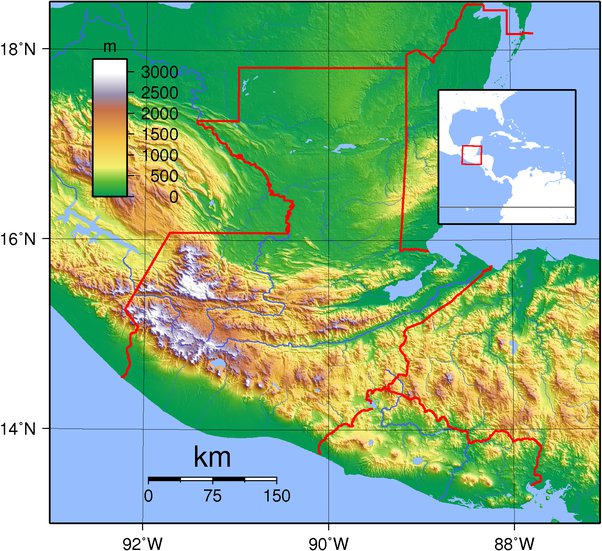
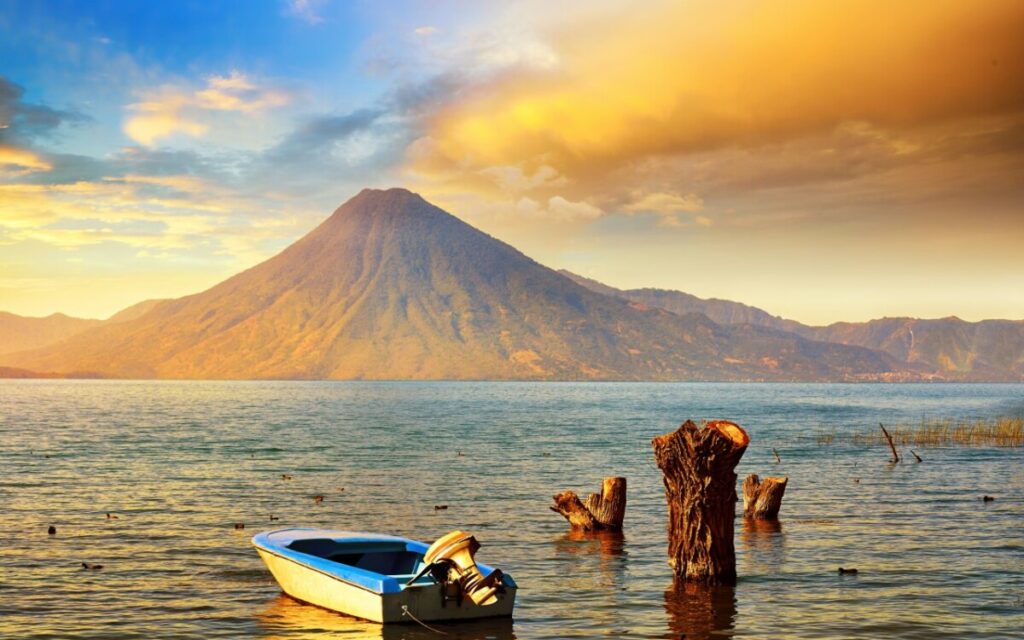
Volcanoes
Guatemala belongs to the Pacific Ring of Fire and has 37 volcanoes. Three volcanoes in Guatemala are active. Tajumulco is the tallest one reaching 13,845 feet.